Review: 2010 Ford Taurus

Don’t believe the hype. The 1986 Taurus was not “the car that saved Ford.” Trucks saved Ford in the late Eighties and early Nineties, as consumer tastes moved away from the one-sedan-fits-nearly-all market in favor of the newly popular SUV. Nor can the 2010 Taurus save a Ford beset by problems on all sides. There are no longer enough potential mid-sized car buyers to make a huge impact on the company’s bottom line, and most of those buyers are really better candidates for the smaller, more affordable Fusion.
No, the Taurus is neither Ford’s savior nor the vanguard of an American sedan renaissance. Instead, it’s a return to that quaintest of quaint American ideals: that of the premium Ford, primus inter pares in the millions of tract homes and leafy streets in that oft-derided “flyover country.” The original Taurus was notable for its unabashed futurism; the 1996 model, for a tragically ovoid miscalculation of the importance of price versus product in the market. This Taurus is something new and old at the same time. It’s intended to be a car that people want to own.
Our exposure to the 2010 Taurus took the form of a press introduction in Knoxville, Tennessee, followed by a long drive to Asheville, North Carolina, in conditions that could best be described as “forty percent chance of loading pairs of animals into a homebuilt ark.” The particular vehicle we drove was a white front-wheel-drive Taurus Limited with a reasonable but not comprehensive selection of the available options. Although the Taurus SE starts at $25,995, same as its predecessor, expect real-world stickers to range between twenty-eight and thirty-four grand for “popularly equipped” lot stock.
The alert reader will note that this price range is not really “Camcord” territory. The vast majority of the Japanese-brand mid-sizers sold are automatic-transmission four-bangers which leave the lot for a price well south of the base Taurus. This is fine with Ford; those buyers will be shown a Fusion. Instead, the Taurus is aimed upmarket. The media kit mentions the Audi A6, Lexus GS350, Chrysler 300, and Toyota Avalon. The first two comparisons can be dismissed as fantasy, the third is likely to be increasingly irrelevant, but the fourth is critical. There are plenty of older people in America who like the idea of buying a large sedan with a few gadgets on it, and those people are very fond of Toyota’s big Camry derivative.
Towards that end, Ford’s made no fewer than ten killer-app gadgets available on the Taurus, including radar cruise control, a surprisingly effective blind-spot warning system that can also notify the driver of cars approaching from the side in a parking lot, and the Orwellian “MyKey” that allows a top speed to be set for the valet key. Presumably this last feature is aimed at overprotective parents.
The MyKey setting on our car was turned off, so we headed for the hills to engage in a little bit of the old ultraviolence. Seated behind the Ford corporate steering wheel and fiddling with SYNC to our hearts’ content, we mercilessly tortured the charmless Duratec 3.5 for every last pony. This is not a fast car by any means—the SHO (in a forthcoming review) will address this—but it can be driven very hard in lousy weather. Stability is outstanding, steering feel is usable, and the chassis provides a sound ride while preserving a modest ability to be turned in on the brakes, should some irresponsible Boomer try it.
Over space and time, the new Taurus proved itself to be a quiet, comfortable vehicle with plenty of useful features. The exterior styling is up for debate, but the interior really does satisfy, providing ninety-five percent of the Lincoln MKS experience for about sixty percent of the price. Lon Zaback, Ford’s Interior Design Manager, waxed eloquent to us on the terribly complex process by which the absolutely convincing-looking faux-stitched leather doors were produced. The doors deserve a story all by themselves, but for now just consider it emblematic of the effort put into the Taurus by all hands.
The last Ford sedan to have this kind of whole-hearted effort devoted to it was the 1996 Taurus, and we all know what happened to that well-intended but ultimately star-crossed effort. It was a premium product and design statement masquerading as a family car, but the 2010 suffers from no such mission confusion. Comparing this very competent and interesting big sedan to the aging Impala or Chrysler 300 is bringing a gun to a knife fight. Against the Maxima, Avalon, and Azera, the Taurus offers size, styling, unique features and perhaps the most focus on the driver to be found in the segment. Don’t expect it to save Ford, but don’t expect it to fail, either.
[Ford provided the vehicle reviewed, gas, insurance, transportation, lodging and food.]

More by Jack Baruth
Latest Car Reviews
Read moreLatest Product Reviews
Read moreRecent Comments
- Jalop1991 In a manner similar to PHEV being the correct answer, I declare RPVs to be the correct answer here.We're doing it with certain aircraft; why not with cars on the ground, using hardware and tools like Telsa's "FSD" or GM's "SuperCruise" as the base?Take the local Uber driver out of the car, and put him in a professional centralized environment from where he drives me around. The system and the individual car can have awareness as well as gates, but he's responsible for the driving.Put the tech into my car, and let me buy it as needed. I need someone else to drive me home; hit the button and voila, I've hired a driver for the moment. I don't want to drive 11 hours to my vacation spot; hire the remote pilot for that. When I get there, I have my car and he's still at his normal location, piloting cars for other people.The system would allow for driver rest period, like what's required for truckers, so I might end up with multiple people driving me to the coast. I don't care. And they don't have to be physically with me, therefore they can be way cheaper.Charge taxi-type per-mile rates. For long drives, offer per-trip rates. Offer subscriptions, including miles/hours. Whatever.(And for grins, dress the remote pilots all as Johnnie.)Start this out with big rigs. Take the trucker away from the long haul driving, and let him be there for emergencies and the short haul parts of the trip.And in a manner similar to PHEVs being discredited, I fully expect to be razzed for this brilliant idea (not unlike how Alan Kay wasn't recognized until many many years later for his Dynabook vision).
- B-BodyBuick84 Not afraid of AV's as I highly doubt they will ever be %100 viable for our roads. Stop-and-go downtown city or rush hour highway traffic? I can see that, but otherwise there's simply too many variables. Bad weather conditions, faded road lines or markings, reflective surfaces with glare, etc. There's also the issue of cultural norms. About a decade ago there was actually an online test called 'The Morality Machine' one could do online where you were in control of an AV and choose what action to take when a crash was inevitable. I think something like 2.5 million people across the world participated? For example, do you hit and most likely kill the elderly couple strolling across the crosswalk or crash the vehicle into a cement barrier and almost certainly cause the death of the vehicle occupants? What if it's a parent and child? In N. America 98% of people choose to hit the elderly couple and save themselves while in Asia, the exact opposite happened where 98% choose to hit the parent and child. Why? Cultural differences. Asia puts a lot of emphasis on respecting their elderly while N. America has a culture of 'save/ protect the children'. Are these AV's going to respect that culture? Is a VW Jetta or Buick Envision AV going to have different programming depending on whether it's sold in Canada or Taiwan? how's that going to effect legislation and legal battles when a crash inevitibly does happen? These are the true barriers to mass AV adoption, and in the 10 years since that test came out, there has been zero answers or progress on this matter. So no, I'm not afraid of AV's simply because with the exception of a few specific situations, most avenues are going to prove to be a dead-end for automakers.
- Mike Bradley Autonomous cars were developed in Silicon Valley. For new products there, the standard business plan is to put a barely-functioning product on the market right away and wait for the early-adopter customers to find the flaws. That's exactly what's happened. Detroit's plan is pretty much the opposite, but Detroit isn't developing this product. That's why dealers, for instance, haven't been trained in the cars.
- Dartman https://apnews.com/article/artificial-intelligence-fighter-jets-air-force-6a1100c96a73ca9b7f41cbd6a2753fdaAutonomous/Ai is here now. The question is implementation and acceptance.
- FreedMike If Dodge were smart - and I don't think they are - they'd spend their money refreshing and reworking the Durango (which I think is entering model year 3,221), versus going down the same "stuff 'em full of motor and give 'em cool new paint options" path. That's the approach they used with the Charger and Challenger, and both those models are dead. The Durango is still a strong product in a strong market; why not keep it fresher?




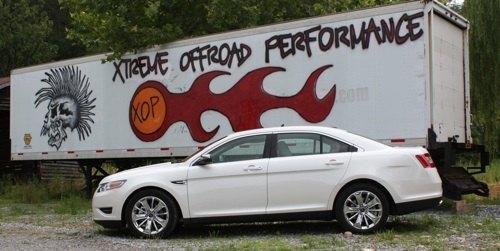

















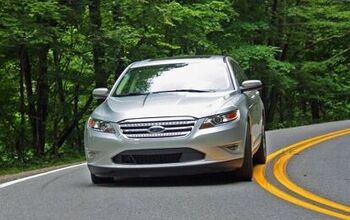

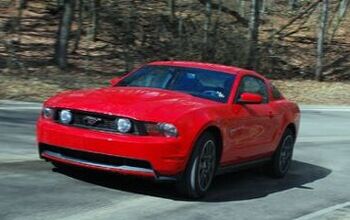
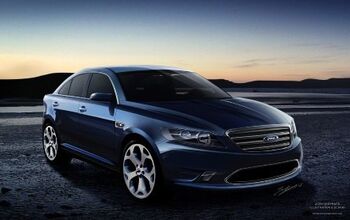
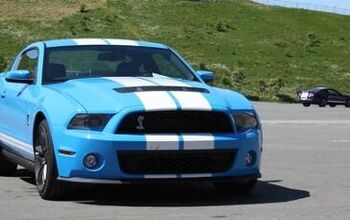










Comments
Join the conversation
I just got one SEL AWD. Excellent car, but have a concern for rear visibility; and ofcourse its expensive.
My dad stepped into the dealer for the LTD or SHO and bought the SEL AWD . He has owned great cars including Mercedes Benz. He was looking for a four-door sedan possibly Audi or BMW. After looking at these cars and realizing everyone and their mom owns one he decided he wanted something more unique but still subtle. I sent him a text about the new Taurus which he almost laughed me out of the house. After further investigation he found the car to be gorgeous and the new FORD system to be worth investing in (no bailouts). After test driving, we found the fit and finish to be great. Tons of room, drove nice, looked sharp was in the price range 29-40k. On purchasing day, there was an AWD on the lot and we didn't even know that was an option. We went for it mainly because the other thing we had in mind was an SUV. We get some ice and snow and rain here in the hilly NJ suburbs and its a nice "psychological" attribute. Did great its first snow season (not a truck, but helped on slushy roads) Performance is great. I laugh when people talk about car performance like they drive the INDIE 500 commuting to work. The finish is great. The FORD experience has been great. I suggest this car for anyone thinking about an SUV and looking for style longevity and performance. There is a boatload of room. Plus it stands out in the crowd of NJ yuppies driving BMW's and AUDI's. If I had a dollar for every time someone asked about this vehicle I could buy another one already. Our good friends and BMW nuts are getting one now. The "taurus" thing was a tough sell, but now we like it. It's almost classic in a way. Availability seems to be an issue. The dealer had a bunch on the lot already sold before arriving. Price I think is fair. We paid low 30's and it has sync, AWD, leather, sunroof, nice wheels, wood grain ... If they keep the price a little cooler than the competition it will be great. The SHO is worth every penny though. Deciding on color will be the hardest part. GO FOR IT!